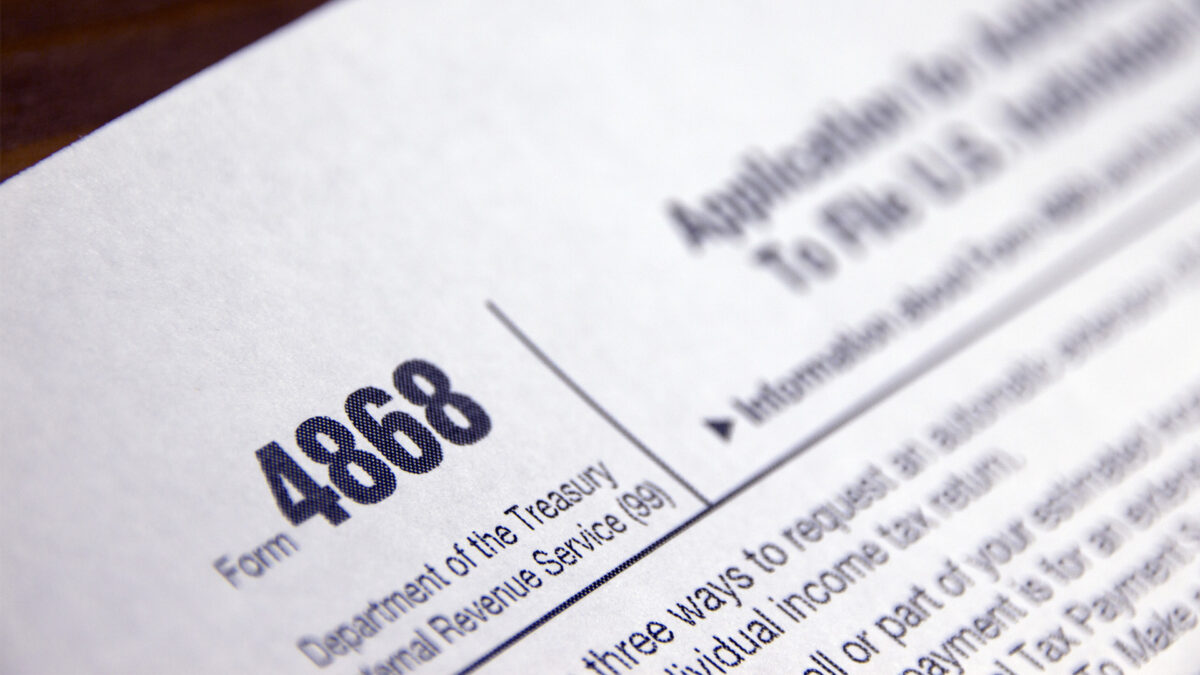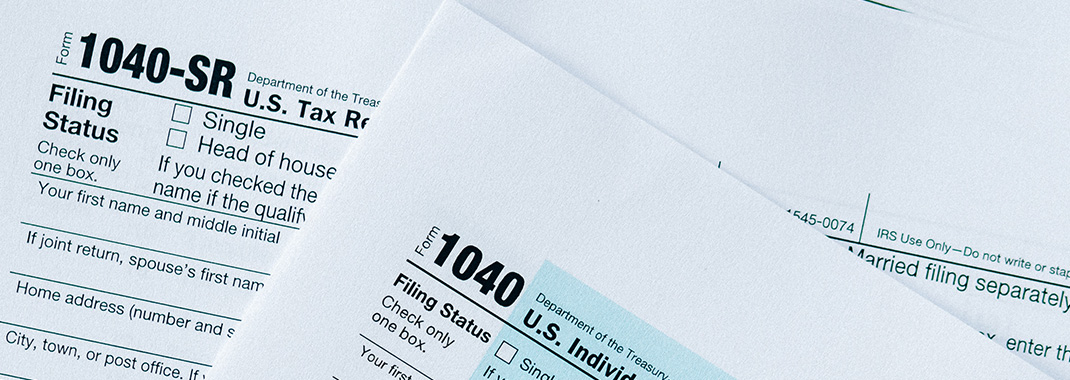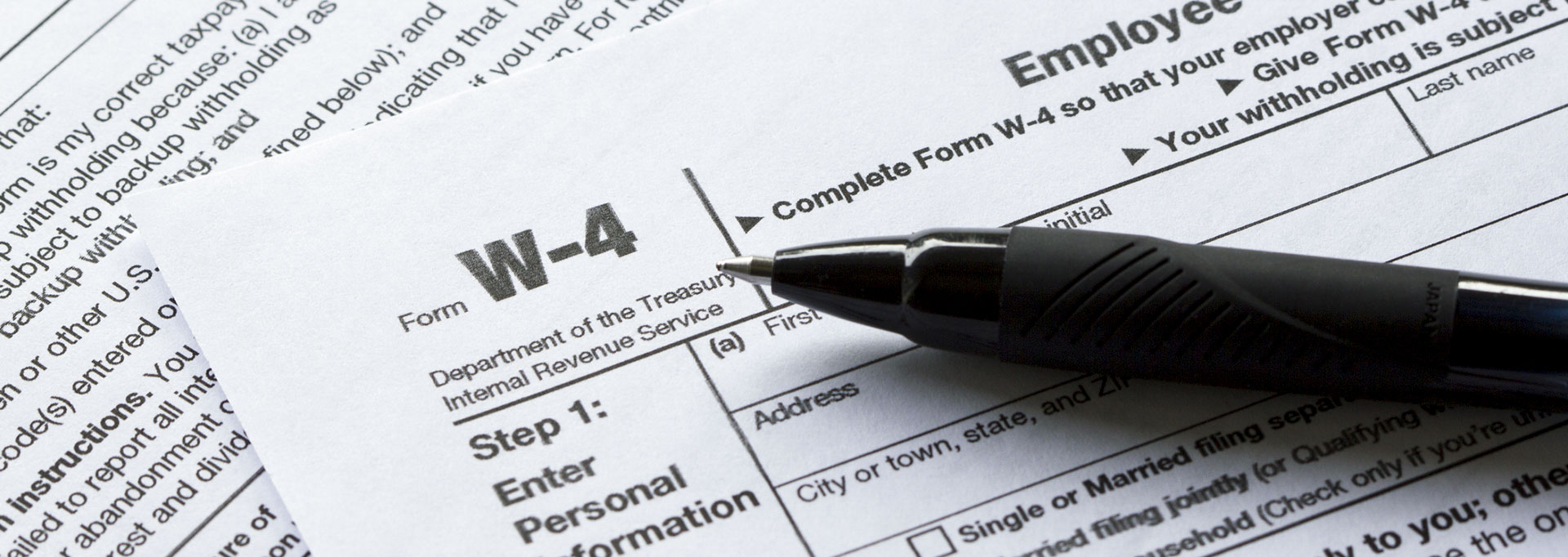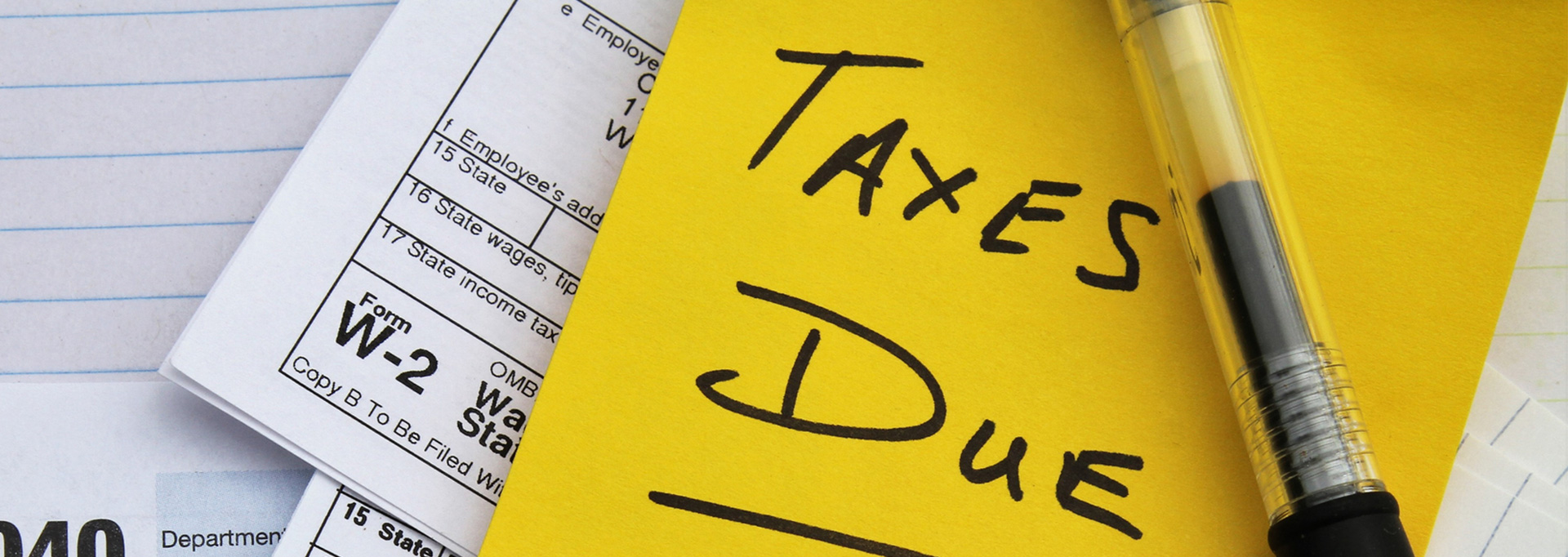Most products on this page are from partners who may compensate us. This may influence which products we write about and where and how they appear on the page. However, opinions expressed here are the author's alone, not those of any bank, credit card issuer, airline or hotel chain.
It may surprise you that 19 million taxpayers requested a tax extension in 2021, according to the IRS. Some people may just need more time, while others might still be waiting for some missing critical information, like a W-2 form from a previous employer that got lost in the mail.
If you need to file a tax extension for any reason, here are the general steps you'll need to take, and what to look out for to avoid penalties from the IRS.
Taxes 101 How to File a Tax Extension
If you plan to use Form 4868, here are the general steps you'll need to file a tax extension. If you'll simply make an electronic payment without filling out the form, skip to step four.
-
1
Identify the right tax form
For personal tax returns, you'll use Form 4868. Print or fill it out online using the IRS’s e-file option in your tax preparation software.
-
2
Compile your tax records
Besides general personal information, you’ll need to have on hand your tax return from the previous year.
-
3
Estimate your taxes
You'll need to estimate your tax liability for the current filing year based on your income, deductions, and what taxes you'll pay in your tax bracket.
-
4
Complete and file the form
Fill out the rest of the form and make sure you check the right boxes, such as if you are out of country. If you are mailing in a paper form and payment, use page four of Form 4868 to determine the mailing address. There is a list of states, plus two options for mailing in your form based on whether you're including a payment.
-
5
Make payment
If you choose the option to make a payment of estimated taxes due, you can’t send cash, so use one of the following options: Phone: Use a credit or debit card to make a payment by phone. Online: You can pay using a credit or debit card. Alternatively, you can use Direct Pay or the Electronic Federal Tax Payment System, which debits your bank account. Check or money order: Checks and money orders can be made by mail and should be made payable to the “United States Treasury.” Write your SSN and phone number on the check or money order, and note that it is for “[Current filing year] Form 4868.”
What Is a Tax Extension?
A tax extension allows you to extend the deadline so you can file your tax return at a later date. You won't be assessed a late-filing penalty when you file an extension, but you are still required to pay your estimated tax bill by the original deadline.
There are various tax filing extensions available for individuals and businesses.
- Personal tax return extensions: Individuals can fill out Form 4868 to request a six-month extension. So, for example, the tax filing deadline for 2023 is April 18. That means the extended deadline will be Monday, October 16, 2023, the first business day after counting 180 days from the original deadline.
- U.S. expatriates extensions: American taxpayers who reside outside the U.S., such as military personnel or those who live and conduct business in foreign countries, can request an automatic two-month extension. No form is needed — they just need to file within two months and include a statement as to why they qualify for late filing. They can then file an additional extension until October if needed.
- Estate tax return extension: Estate taxes are normally due within nine months following the estate holder’s death. The taxpayer can request another six-month extension as long as they file the extension and pay the tax before the due date.
- Business tax return extensions: Businesses can qualify for a five-month extension if they file before the original tax filing deadline. The forms are varied, however, with sole proprietors using the same Form 4868 as individual taxpayers, partnerships using Form 1065, and corporations using Form 7004.
 Related Article
Related Article
9 Best and Cheapest Online Tax Services in July 2024
Benefits of Filing a Tax Extension
Not many people know that they can request more time to file their tax returns. Whether you simply need more time, will be out of town during tax season, or are unable to obtain the necessary tax documents, there are some benefits to getting an extension.
There are several advantages to requesting a tax extension for your return:
- Improve accuracy of tax filing: Scrambling to finish your taxes can be stressful. When you have more time to finish up your taxes, you can buy yourself more time and avoid unnecessary stress that might lead to errors on your return.
- Avoid late penalties: If you miss the original filing deadline, you'll be assessed a failure-to-file penalty. Requesting an extension can help you avoid paying the penalties.
While not everyone will want to or need an extension, having the option and knowing how to request one is useful should the need arise.
Do You Pay a Penalty for Filing a Tax Extension?
There is no penalty or fee for filing a tax extension, provided you file it by the original deadline. However, there are details regarding other penalties you need to know when deciding whether to file a tax extension.
- You'll still need to pay your tax bill on time: A tax filing extension is only for submitting the current tax year's paperwork. It's not an extension for paying taxes due at the original file date. If you owe taxes, you'll still need to make the estimated payments, or you could face late payment penalties, which can be quite steep.
- Interest is still levied on unpaid taxes: Whether you get an extension or not, interest on unpaid taxes will still be charged.
Ways to File a Tax Extension
Form 4868 indicates three ways to request a tax filing extension.
- Mail: Print and fill out Form 4868 and, to avoid penalties and interest, enclose a payment of estimated taxes due via check or money order. Cash is not accepted. Keep in mind it needs to be postmarked on or before the current year’s tax deadline date.
- Online: File electronically by using the IRS’s e-file option in your tax software or by asking your tax service professional to do it for you.
- Make a payment: If you pay all or part of your taxes due, even if it’s just an estimate, the IRS will grant a filing extension automatically without requiring a Form 4868. This option is only available if you pay by credit or debit card, using Direct Pay, or the Electronic Federal Tax Payment System.
 Related Article
Related Article
3 Things to Know Before Paying for a Tax Preparation Service
Filing Your Taxes Accurately
If you need more time to figure out your tax filing situation, requesting a tax extension and making your tax bill payments can buy you more time. Make sure you seek help from a tax professional to ensure you are following all the rules based on your unique tax situation and to help you avoid any tax penalties for late filings.
Frequently Asked Questions
-
Yes. There is no penalty or fee for filing a tax extension, provided you file before the original deadline and pay your taxes.
-
Filing for a tax extension is easiest online. You can file electronically via the IRS’s e-file option in your tax software or by asking your tax service professional to do it.
-
Besides general personal information, you’ll need to have on hand your tax return from the previous year. Additionally, the form will require you to estimate your tax liability for the current filing year, which you will need to pay by the April deadline.
-
There is no penalty or fee for filing a tax extension. However, to avoid incurring penalties and interest on your tax bill, you must make a payment along with your extension request. If the payment is only for an estimated amount, your tax return, when filed, will determine if you still owe the government or if you will receive a refund.
-
If your tax extension if rejected, you can make the necessary corrections and resubmit it to the IRS. Extensions can be rejected if your personal information conflicts with IRS records, such as the wrong last name or incorrect Social Security number.



















